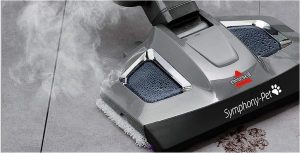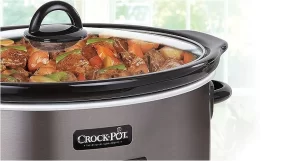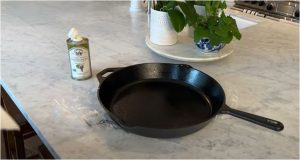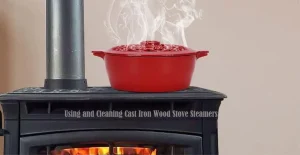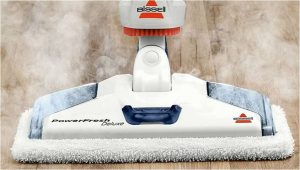Oven Smoke Issues: Causes and Solutions
Oven smoke can be a real buzzkill in the kitchen, right? But don’t worry, we’ve got this covered. This analysis will help you get to the bottom of those pesky smoke signals and have your oven running smoothly again.
First things first, is your oven fresh out of the box? If so, a little smoke and some funky smells are normal for the first few uses. It’s just part of the manufacturing process settling down. But if your oven isn’t new, we need to dig a little deeper. Have you given it a good cleaning lately? Leftover cleaner residue can cause smoke when heated. Also, if your oven is super dirty with baked-on grime, that can be a culprit too.
Now, let’s talk about what you’re cooking. Are you a fan of juicy roasts or cheesy casseroles? Those delicious drips and splatters can turn into smoke if they hit the hot oven floor. Keep an eye on your food and consider using a baking sheet to catch those drips.
And here’s a sneaky one – a faulty heating element. If your oven smokes even when it’s empty, that could be the problem. That’s a job for a professional, so call in the experts for a repair.
Let’s not forget the basics. Did you accidentally drop something in the oven? A rogue piece of food or packaging can cause smoke. Check the oven floor to make sure it’s clear.
Decoding Oven Smoke Causes
Ovens, like any other appliance, have their quirks and issues. One concern many homeowners face is the sudden appearance of smoke. This can be due to a variety of reasons.
Preheating, for instance, can sometimes cause smoke, especially if there are food particles or residues left inside. These remnants, upon heating, can ignite and produce smoke.
Malfunctioning elements are also culprits. A faulty heating element might not distribute heat evenly or might overheat, leading to smoke.
Regular maintenance and cleaning can help in reducing such incidents, ensuring your oven operates efficiently and safely.
Oven Smoke Issues: Causes and Solutions
1. Residual Food Particles
Over time, food particles can fall onto the oven’s heating elements or settle on its base. These remnants, upon subsequent heating, can ignite, leading to smoke.
Solution: Regularly inspect the oven’s interior for fallen food bits, especially after cooking dishes that might splatter or spill. Using an oven liner can also help catch these particles, making cleanup easier.
2. Faulty Heating Elements
A malfunctioning heating element might not distribute heat evenly, leading to localized overheating and smoke.
Solution: Periodically check the heating elements for any visible damage or irregularities. If they appear warped or damaged, consider replacing them or consulting a technician.
3. Protective Coatings on New Ovens
New ovens often come with protective coatings that can produce smoke as they burn off during the initial use.
Solution: Before using a new oven for the first time, run it at a high temperature in a well-ventilated area to allow these coatings to burn off.
4. Cleaning Agent Residue
After cleaning, residues from certain cleaning agents can produce smoke upon heating.
Solution: Always rinse the oven thoroughly after cleaning. Opt for natural cleaning solutions that leave minimal residues.
5. Blocked Oven Vents
Oven vents can become blocked with debris or grease, restricting airflow and causing smoke.
Solution: Regularly inspect and clean oven vents to ensure they remain unblocked. This not only prevents smoke but also ensures efficient oven operation.

Safety First: Smoke vs. Steam
It’s essential to differentiate between smoke and steam in ovens. Smoke often indicates something is amiss, whether food particles igniting or a malfunctioning component.
On the other hand, steam is a natural byproduct of cooking, especially when baking or roasting moist foods. While steam is generally harmless, it’s crucial to ensure proper ventilation to prevent buildup.
On the contrary, persistent smoke can be a sign of a deeper issue and might even pose health risks if inhaled over extended periods. Always prioritize safety and address any smoke issues promptly.
Brands in Focus: Samsung and Whirlpool Oven Concerns
Every brand has its unique set of challenges, and ovens are no exception. Take Samsung and Whirlpool, for example. Some users have reported smoke issues with new ovens from these brands.
It’s not uncommon for new ovens to emit smoke during their initial uses. This can be due to residues from the manufacturing process or protective coatings burning off.
While this is typically a temporary issue, it’s always a good idea to monitor and ensure that the smoke doesn’t persist beyond the initial uses.
If it does, reaching out to the manufacturer or a professional technician can provide clarity and solutions.
Post-Cleaning Puzzles: The Smoky Aftermath
Cleaning an oven is essential for its maintenance and efficiency. Yet, sometimes, this very act can lead to the unsettling sight of smoke the next time you turn it on. Why does this happen?
Often, the culprit is residues from cleaning agents that weren’t thoroughly rinsed away. These residues, upon heating, can produce smoke. Another reason could be leftover food debris that gets ignited.
To prevent this, it’s crucial to ensure that the oven is meticulously rinsed and dried after cleaning.
Opting for natural cleaning solutions and removing harsh chemicals can also minimize post-cleaning smoke episodes.
New Oven Chronicles: Initial Smoke Signals
The excitement of using a brand-new oven can quickly be dampened by the sight of smoke during its maiden uses.
This phenomenon can be attributed to various factors, such as manufacturing residues or protective coatings that are designed to burn off during the initial heating cycles.
While this phase is typically temporary, it’s essential to monitor the situation. If the smoke continues beyond a few uses, it might be time to consult with the manufacturer or a technician.
Electric Oven Enigmas: The Preheating Phase
Electric ovens are known for their efficiency. Yet, they can sometimes surprise users with smoke during the preheating phase. This can be due to lingering food particles or even a malfunctioning heating element.
Regular maintenance and ensuring the oven is clean before preheating can help in reducing such incidents.
Mist Mysteries: The Oven’s Steamy Emissions
Not all emissions from an oven are smoke. Often, what one perceives as smoke is steam, especially evident during the cooking of moist foods.
Steam is a harmless byproduct of cooking and indicates that the food inside is releasing moisture.
Recognizing the difference between steam and smoke is vital, as it helps ensure that the oven is functioning correctly and safely.
FAQs
What Could Cause a New Oven to Emit Smoke?
A new oven might emit smoke due to residues from the manufacturing process or protective coatings designed to burn off during initial heating cycles.
Is Smoke from the Oven Harmful to Inhale?
While occasional smoke from food residues might not be harmful, continuous exposure to smoke, especially from electrical issues or chemicals, can be detrimental to health.
Can a Faulty Thermostat Lead to Oven Smoke?
Yes, a malfunctioning thermostat can cause the oven to overheat, leading to smoke, especially if there are food residues present.
Does Oven Positioning Affect Smoke Emission?
Proper ventilation is crucial. If an oven is positioned in a cramped space without adequate airflow, it might lead to increased smoke and reduced efficiency.
How Often Should I Clean My Oven to Prevent Smoke?
Regular cleaning, ideally once every few months or after heavy usage, can help prevent smoke caused by food residues.
Can use aluminum Foil Inside the Oven Cause Smoke?
If aluminum foil comes in contact with the heating element, it can cause sparks or smoke. It’s advisable to use foil cautiously and ensure it doesn’t touch the elements.
Are There Any Warning Signs Before an Oven Starts Smoking?
Unusual sounds, sparking, or a burning smell can precede smoke. It’s essential to turn off the oven and inspect it if any of these signs are noticed.
In Light of the Discussion
Oven smoke, while common, should never be overlooked. Whether it’s residues, a new oven’s initial phase, or a deeper electrical issue, addressing the root cause ensures the safety and longevity of the appliance. Regular maintenance, understanding the difference between smoke and steam, and being aware of brand-specific quirks can make oven usage a smooth experience. Always prioritize safety and consult professionals if uncertainties arise.

